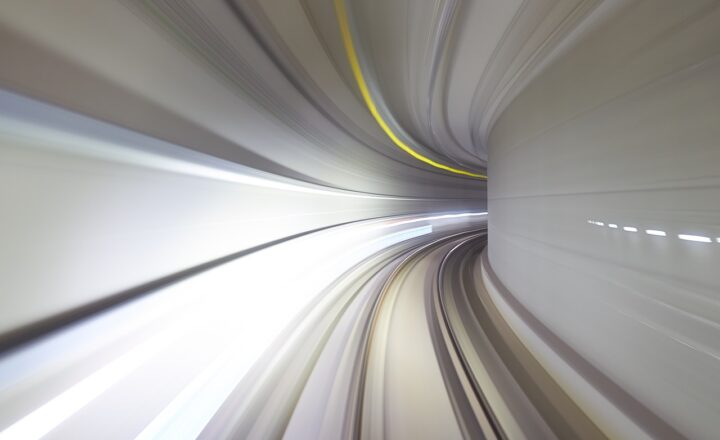Hyperloop vs. Electric Cars: The Future of Green Transport
October 23, 2024

As the world grapples with climate change, the need for sustainable, eco-friendly transportation solutions has never been more urgent. Two of the most talked-about innovations in green transport are the Hyperloop and electric cars. Both promise to revolutionize how we move people and goods, but how do they stack up against each other? In this article, we’ll compare Hyperloop and electric cars, exploring their technology, environmental impact, feasibility, and the role they will play in the future of transportation.
1. What is the Hyperloop?
The Hyperloop is a futuristic transportation system that uses magnetic levitation (maglev) and vacuum tubes to propel pods at high speeds, drastically reducing travel times between cities. The concept was popularized by Elon Musk, who envisioned a system that could transport people at speeds of over 700 mph (1,126 km/h).
- How It Works: The Hyperloop operates in low-pressure tubes to minimize air resistance, allowing pods to travel at incredibly high speeds. Magnetic levitation reduces friction, making the system energy-efficient and faster than traditional rail.
- Potential Impact: If fully realized, the Hyperloop could transform intercity travel, cutting down trips that normally take hours to mere minutes. For example, a trip from Los Angeles to San Francisco could take under 30 minutes, compared to a six-hour drive.
Though the Hyperloop is still in the development stage, it has the potential to become a major player in the future of sustainable transport.
2. The Rise of Electric Cars
Electric cars are no longer a futuristic concept; they are becoming increasingly mainstream, thanks to companies like Tesla, Nissan, and Chevrolet. Powered by electric batteries rather than fossil fuels, electric cars are seen as a key solution to reducing greenhouse gas emissions from the transportation sector.
- Advances in Battery Technology: One of the biggest challenges for electric cars has been battery range and charging time. However, advances in lithium-ion batteries, solid-state batteries, and fast-charging infrastructure have made electric cars more practical for everyday use.
- Environmental Impact: Electric cars produce zero tailpipe emissions, making them far cleaner than traditional gasoline or diesel vehicles. However, their overall environmental impact depends on the source of the electricity used to charge them. Renewable energy sources like wind and solar reduce their carbon footprint even further.
With governments around the world pushing for greener transportation policies, electric cars are set to dominate the automotive market in the coming decades.
3. Cost and Feasibility
When comparing Hyperloop and electric cars, cost and feasibility are major factors. While electric cars are already on the roads, the Hyperloop is still in the experimental phase.
- Hyperloop Costs: Building a full-scale Hyperloop system is an enormous financial undertaking, with estimates ranging from $6 billion to $20 billion per route. Additionally, there are technical challenges related to safety, land acquisition, and regulatory approvals that need to be addressed.
- Electric Car Costs: The cost of electric cars has been decreasing steadily, thanks to advances in battery technology and mass production. While electric cars are still more expensive upfront than gasoline cars, lower maintenance and fuel costs make them more economical in the long run.
In terms of feasibility, electric cars are much more accessible for the average consumer today, but the Hyperloop holds promise for high-speed, long-distance travel in the future.
4. Environmental Impact
Both the Hyperloop and electric cars aim to reduce the environmental impact of transportation, but they do so in different ways.
- Hyperloop: The Hyperloop’s energy-efficient design minimizes its carbon footprint. By using renewable energy sources like solar panels along the tubes, the system could potentially operate with zero emissions. Additionally, its high-speed nature could reduce the need for air travel, which is a major contributor to global CO2 emissions.
- Electric Cars: Electric cars eliminate tailpipe emissions, reducing air pollution and greenhouse gases. However, the environmental benefits depend on how the electricity used to charge the cars is produced. In regions that rely on coal or natural gas for power, electric cars still contribute to carbon emissions, albeit less than gasoline-powered vehicles.
Both technologies have the potential to drastically reduce transportation-related emissions, but their overall impact depends on the energy sources powering them.
5. The Future of Green Transport
Looking ahead, both the Hyperloop and electric cars are poised to play significant roles in the future of green transport. However, they serve different purposes and are likely to complement, rather than compete with, each other.
- Electric Cars for Personal Use: As electric car technology continues to improve, we can expect widespread adoption for personal and urban transportation. With governments offering incentives for electric vehicle purchases and building out charging infrastructure, electric cars are likely to become the dominant mode of personal transport.
- Hyperloop for Long-Distance Travel: The Hyperloop, if successfully implemented, could revolutionize long-distance travel between major cities. By offering a faster, cleaner alternative to airplanes and long-distance driving, it could become a key player in intercity transportation.
Both technologies represent a shift toward more sustainable, environmentally friendly transportation, each addressing different segments of the travel market.
Conclusion: A Green Future for Transport
The Hyperloop and electric cars each offer unique advantages in the quest for greener, more efficient transportation. Electric cars are already making an impact by reducing emissions on a global scale, while the Hyperloop promises to transform long-distance travel. Together, these technologies could redefine how we move through the world, creating a future where transportation is faster, cleaner, and more sustainable.







